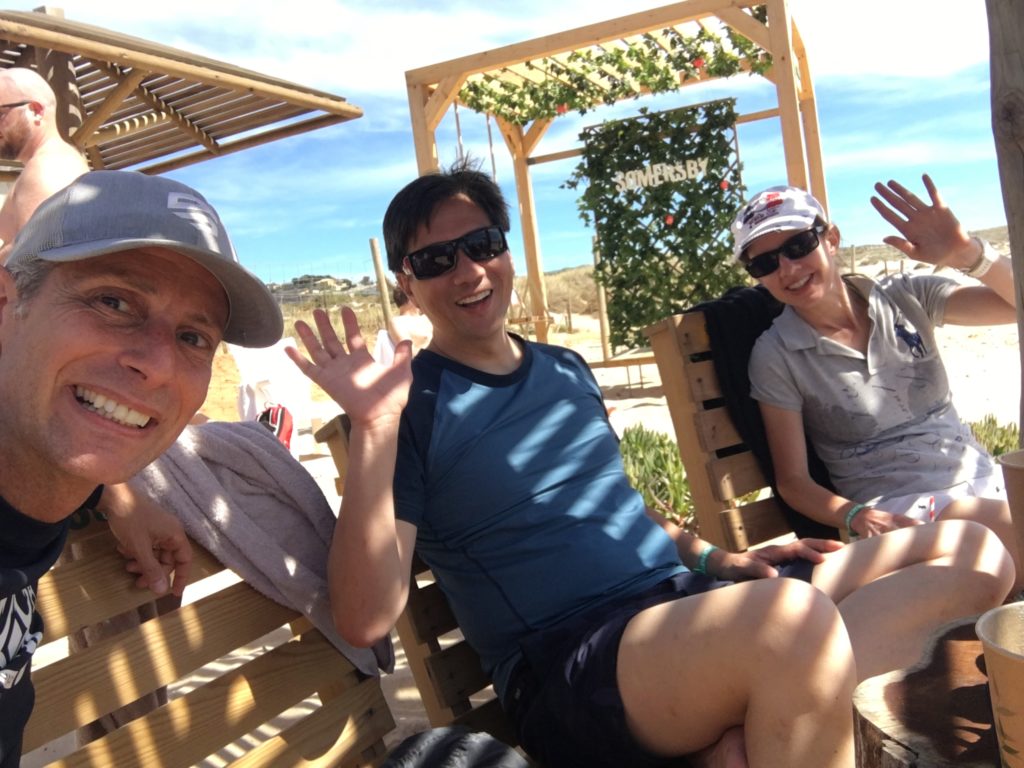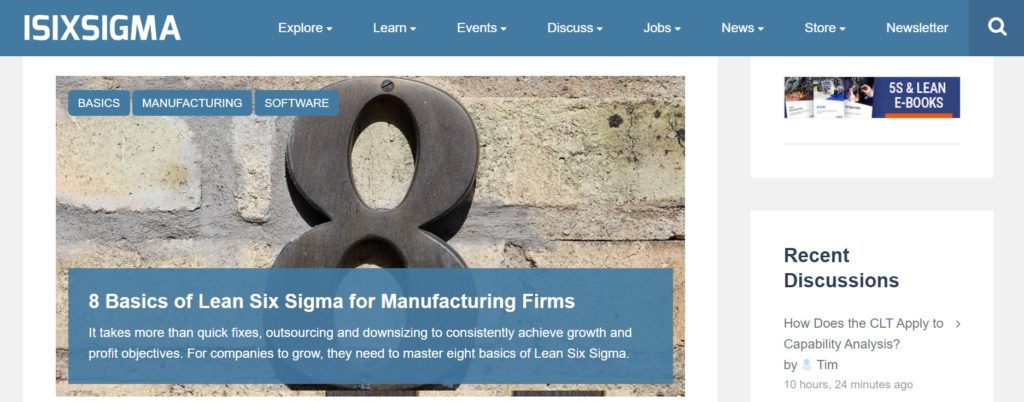What happens when a nuclear engineer with entrepreneurial spirit who worked in the best of corporate America, from CitiGroup to General Electric, becomes passionate about domain names? The answer is Michael Cyger. Mike took the domain industry by storm a decade ago after successfully selling his previous business, iSixSigma. In that time, Mike won the following awards:
- 2016 The Domain Conference Developer of the Year
- 2015 The Domain Conference Blogger of the Year
- 2015 The Domain Conference Goodwill Ambassador of the Year
- 2014 Hall of Fame Inductee
- 2014 T.R.A.F.F.I.C. Best Domain Blog
- 2014 Domainer’s Choice Awards Most Helpful Resource for Domain Industry Newcomers
- 2013 T.R.A.F.F.I.C. Developer of the Year
- 2012 T.R.A.F.F.I.C. Best Domain Blog
He did that by demystifying the domain industry and making it accessible, first with the acclaimed interview series DomainSherpa and then with DNAcademy—his latest project. Michael was kind enough to let me have a peek at the course, and I can just say: WOW! Besides the content, what blew my mind was the reference library with 160+ downloadable SOP (standard operating procedures) of day-to-day tasks for domain investors.
Outside his work, what most impresses me about Mike is his integrity and transparency. I had the chance to work with him as a media partner for our quarterly Liquid Domains Report, as well as join his DomainSherpa portfolio reviews. Mike took the time to make sure that no person in the panel had conflicts of interest in the domains presented. Everyone in the industry I talked to, like his business partner Doron Vermaat at Efty, gave raving reviews about working with Mike. Domains aside, I have always been curious about Mike’s personal story, so I got to ask him a few personal questions. Please enjoy this wide-ranging interview with Mike Cyger.

Where do you live and why?
My wife and I moved to Bainbridge Island, Washington, in 2005 to be closer to family (my wife grew up in the Northwest), to have more space around us, and to raise our children in an environment that was a little more sheltered. In the summer, there is not a place on Earth that is more beautiful. The remainder of the year we dream about summer.
We’ve lived in northern California, North Carolina, and Connecticut and loved each of those experiences, but the Pacific Northwest is our forever home.

What did you want to be as a kid growing up? How did that bring you to intern for NASA?
I don’t remember ever saying anything like, “I want to be a veterinarian when I grow up” when I was a kid. But when I was 11, I took a summer school course on computer programming and discovered my passion for the subject (it also led me to my short-lived stint as a computer “hacker” of video games on my Apple IIe computer). I credit this course with planting the seed that later led to coding my own WordPress-like content management system nearly two decades later.
My parents were immigrants and worked hard six days a week. My work ethic definitely came from them. And both of my parents were well-respected in their careers, so they had a wide network of friends and peers.
It was my mom, the consummate networker, that helped me get my first two jobs – not including the paper route my sister passed down to me – first at Great Western Foam Products in Orange, California, working for the plant engineer, and later at NASA-JPL as an engineering intern in Pasadena, California. Both jobs helped set my resume up for success later in life. (Another shout-out to my sister for scoring me a job parking cars at the Hollywood Bowl for a couple of summers.)

You worked in great companies, from General Electric to Citigroup. What was the biggest lesson you learned from these years in the corporate world?
There was no one big aha lesson, just lots of different experiences that contributed to my skill sets, as well as an increased understanding of how a company works and, frankly, of myself.
During my 10 years at GE, I had the pleasure of working with some of the greatest people in my career. While it demanded a lot from its employees, GE also gave me a lot. Besides having enriching and varied work experiences, I participated in world-class leadership training, learning skills that I still use today – including things as fundamental as how to give an effective presentation and how to facilitate a meeting. It might not sound earth-shattering, but if you’ve ever sat through a poorly run meeting, you know how important preparation and adept facilitation are. My wife, who went through some of the same training, and I still refer to a phrase we learned 25 years ago when giving presentations – BLUF and BLAB: bottom line up front and bottom line at bottom.
And I was fortunate to be at GE when Jack Welch was CEO and was revolutionizing how work was done around the world. It was my experience in his Six Sigma initiative that led to my position with Citigroup, which in turn inspired me to start my own company.
What is Six Sigma and why did you decide to start a business about it?
Six Sigma is a methodology and set of tools for solving problems. Any problem. Any process. Any area of the business.
Six Sigma was Jack Welch’s last major initiative during his tenure at GE. He aimed to revolutionize how business decisions were made in the company that he grew from $12 billion to $410 billion. He would do it by removing “gut feel” from the decision-making of leaders, and instead base decisions on data.
If you wanted to rise up the ranks of leadership, you had to learn Six Sigma, solve problems – not put band-aids on them or be great at putting out fires – and you needed to manage your business unit or product area by data.
I learned Six Sigma while I was at GE and I loved it. It’s a statistics-based methodology, which appealed to me because of my technical background. I used it to solve issues around our shipping and receiving dock at GE Capital so we could get products back to customers more quickly. I used it to solve issues around deposits being mailed into Citigroup, so money would hit customers’ accounts faster.
It was during my time at Citigroup, networking with peers from other financial services companies, that I realized people were having serious issues implementing Six Sigma successfully in their companies for many reasons. And while people were experiencing similar or related problems, they didn’t have a way to easily share information and support each other. I started iSixSigma.com to create a place in which those common challenges and lessons learned could be shared, to create a community of Six Sigma practitioners.
That was how I started publishing—never having done it before, but naïve enough to think I could, persistent enough not to give up when I was only getting four to five hours of sleep a night, and consistent enough to improve it day by day.
Is there any insight from Six Sigma that you can apply to domain names?
At DNAcademy I’ve created a methodology and set of tools to help investors value domain names. It’s not a prescriptive methodology, but it includes all the elements necessary for an investor or broker to properly value domain names. It turns “black box” algorithms like the GoDaddy valuation calculator into a set of input data that you can think critically about, make assumptions about, and then determine for yourself. It’s teaching people to fish, not just be given a fish – as the saying goes.
It’s very similar to Six Sigma in the way that it values the use of good data. In your domain name purchases, if you don’t understand the factors involved or rely on bad data, then you’re destined to always be guessing about what’s working or not in your investing. Garbage in, garbage out – bad data leads to bad decision making.
We can look at the daily sales at DNJournal and NameBio, but unless you dig into the characteristics of the domain name and associated metrics, then you’ll never understand why certain domain names reach the sales levels they do and others are worthless.
In your domain name purchases, if you don’t understand the factors involved or rely on bad data, then you’re destined to always be guessing about what’s working or not in your investing

What was the biggest lesson from selling your company to Schofield Media?
There were so many lessons – from how to properly calculate EBITDA, to how to look at multiples, to the offering process, to the multiple bid process and finally to due diligence and closing. I feel like I received a master’s degree in valuing and selling a company.
But it was the earn-outs legal clause that was my biggest lesson.
Although we had the good fortune of selling in early 2008 at the market peak, earn-outs over time are hard to achieve when you’re in a recession, as we were in the second year after the sale, trying to meet performance targets. “A bird in the hand is worth two in the bush” is an apt summary. I think it’s worth considering whether less upfront is better than a higher total payment over time.
In a strange turn of events, Wells Fargo’s financial difficulties forced Schofield Media into bankruptcy proceedings, and I purchased back the iSixSigma.com assets at the end of 2011. It’s great to be back at the helm and still involved in helping companies improve efficiency by successfully implementing Six Sigma.
“A bird in the hand is worth two in the bush” is an apt summary. I think it’s worth considering whether less upfront is better than a higher total payment over time.
How did you become involved with domain names?
After I sold my company to Schofield Media and worked for them as a consultant for a couple of years during the transition, I spent some time in Seattle looking at and investing in startups. I met some great founders and heard some awesome ideas. But what consistently struck me was the poor choices in branding names many of these startups made.
From choosing misspellings, to picking words that fail the radio test, to selecting the first three-word domain name they could find available for registration fee, I was amazed how meticulous they were in product design – almost pixel perfect – and then would drop the ball when it came to their domain name and branding.
Because I was an online publisher that had purchased domain names in the past for my business, they would often ask me how I valued and acquired domain names but – to be honest – I didn’t have very many answers.
Starting DomainSherpa was my way to get those answers. I set about to interview those in the know to help share information about what I thought was an opaque industry at the time.
From choosing misspellings, to picking words that fail the radio test, to selecting the first three-word domain name they could find available for registration fee, I was amazed how meticulous they were in product design – almost pixel perfect – and then would drop the ball when it came to their domain name and branding.

What do you feel is the most common mistake(s) beginner domain investors make?
Buying too many domain names without proving an investment thesis.
As investors, our job is to invest in assets that are underappreciated. It pains me to see newer investors spend hundreds to thousands of dollars registering an entire area of domain names that they think has value without proving it first.
They do this because they’re afraid they’ll lose out on the opportunity, but the truth is that if they were to invest a fraction of their funds in the best domain names and then test the market they would be much better off. They would learn faster with lower risk.
Like anything else, we need a structure to follow, data to consider, and a peer group to share insights with if we are to be successful. Nobody is successful on their own.
You joined the domain industry about 10 years ago. What is something you changed your mind on since then?
Like everyone, I have biases in the way I think about investing and domain names, and I learn lessons every month because I try different tactics.
I used to love exact-match domain names and I have an expertise (albeit outdated) in search engine optimization and search engine marketing. So I purchased my first investment portfolio of 67 SEO and SEM exact-match type domain names in 2012 for about $45,000. I held them for about 5 years and it returned $61,000, a 7% APY on my investment. It worked at the time, but I wouldn’t recommend or follow the same strategy in 2020.
I purchased some .property domain names that never took off. Like many primarily-.com investors, I hedged my bet in case some of the new TLDs caught on, but in the end the registries held back all the best names and I found it really hard to make a profit.
Now, my primary emphasis is investing in “blue chip” domain names that include single-word .com domain names that can be used as a brand for a company – names like Brew.com, Tulip.com and Important.com that I’ve sold, and names like Dragonfly.com, Pyramid.com and Diagnose.com that I still own today.
my primary emphasis is investing in “blue chip” domain names that include single-word .com domain names that can be used as a brand for a company

If you had only $10,000 and wanted to start investing in domain names, what would you do?
What I would do may not be best for another investor. I want to be clear about that.
I don’t consider myself “word creative.” Thinking of great names is not my forte. But I can look at lists and figure out the best names on that list. So buying expired domain names using a process appeals to me.
With only $10,000 and not a penny more, I would focus on buying great, brandable domain names that companies would pay $1,000 to $4,000 for at a retail marketplace.
Here’s how I’d break it down:
- Registrations: 100 domains at $12 close-out plus $8 registration = $2,000
- Opportunistic buying: 10 domains at $250 per domain = $2,500
- Renewals: 5 years at $10 per year for 110 domains = $5,500
- Price all domain names. List for sale on Afternic MLS and Sedo MLS
- Use Afternic landing pages for free up-front (20% commission on sale) or Efty landing pages for $144 per year (no commission on sale; full disclosure, I’m an investor)
- All sales goes back into buying better domain names and staying around 110 domain names in the portfolio
- At a 3% sell-through rate and $2,500 average sales price each year, that would yield $8,250 pre-tax income (roughly $6,270 post-tax)
- A small fraction of domain acquisitions are going to be “homeruns” at $10,000 to $25,000 sales prices
- Some years would return 2x to 3x that amount, some years less
- When I’m ready to retire, I could continue investing part-time or sell the domain name portfolio to another investor for $250 per domain name and a proven, documented history
But this plan should come with three requirements:
- You must spend at least an hour a day, a minimum of five days per week looking at expired domain names.
- You must find a successful investor or peer group to check purchases against.
- You can only invest 10% of your cash funds per year, which will give you time to learn what’s working before committing all of your funds to a particular type of domain name or investing tactic.
If you find that investing in domain names is not for you, liquidate your domain names on DNWE.com or NameLiquidate.com. Invest the remaining funds in an index fund for 5% APY and focus on what you enjoy doing.
You had a phenomenal career, moving from the corporate world, to entrepreneurship, to domain names. What do you think is your superpower?
My wife, Erin.
I couldn’t have accomplished everything I have in my career and in our publishing businesses without the love, support and assistance of my wife (who is also our editor-in-chief).

What is your favorite non-domain related book(s), blog(s) and app(s)?
I recently subscribed to the TLDR newsletter and am enjoying it. One email a day with six interesting stories from tech, science and coding. It’s not a news cycle summary. It’s about the evolution of technology, so it’s a quick way to stay abreast of trending or upcoming topics that may relate to domain names as well.
How can people find you?
The best way to connect with me is on Twitter @MichaelCyger. Feel free to send me a DM. If you want only domain name-related info, please follow @DNAcademy.
For students of DNAcademy, I’m regularly on the private discussion forum.
And, at least for the foreseeable future, I’m on a two-hour virtual social every Friday afternoon from 1PM to 3PM Pacific that anyone can join.
Any parting notes or comments?
I am very much looking forward to getting back together – in person – with friends and colleagues in the domain name industry someday soon. Thanks for doing this series of in-depth interviews so while we’re at home we can still learn about others in the industry like we do when we share a meal with them. Cheers!


2 responses to “Industry Interviews – Michael Cyger (DNAcademy)”
Nice interview Giuseppe. Thank you for this!
Hi Giuseppe,
When I first started in this industry I wanted to learn as much as possible before making any serious investments. Shane Cultra, Michael Cyger, Ammar Kubba and yourself have been a big reason for my success.
Please keep up the great work and thanks a million.
Cheers